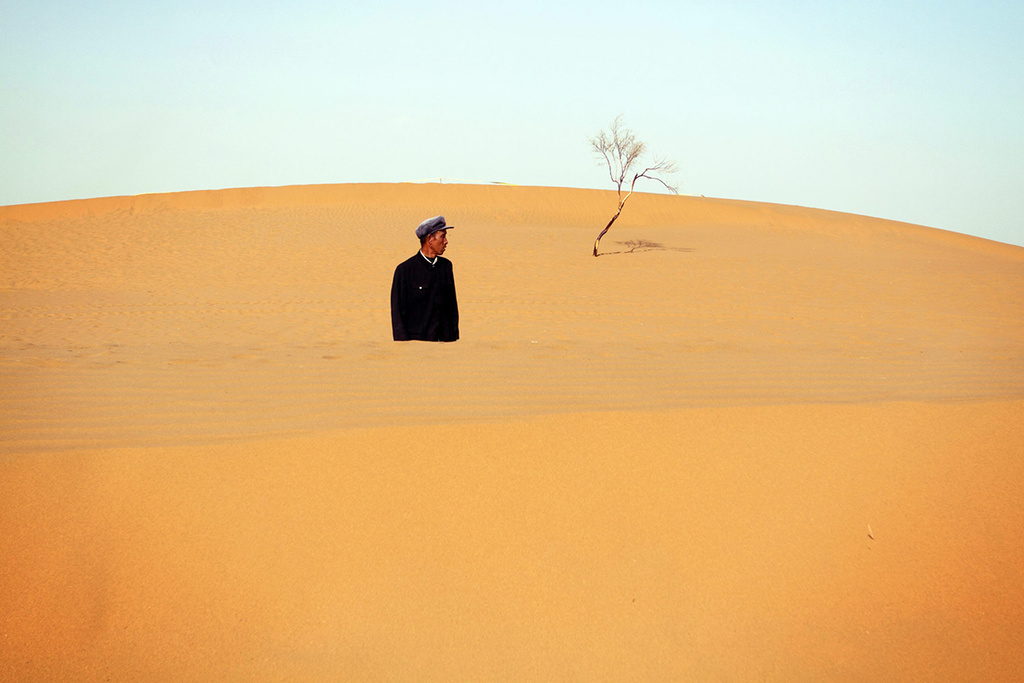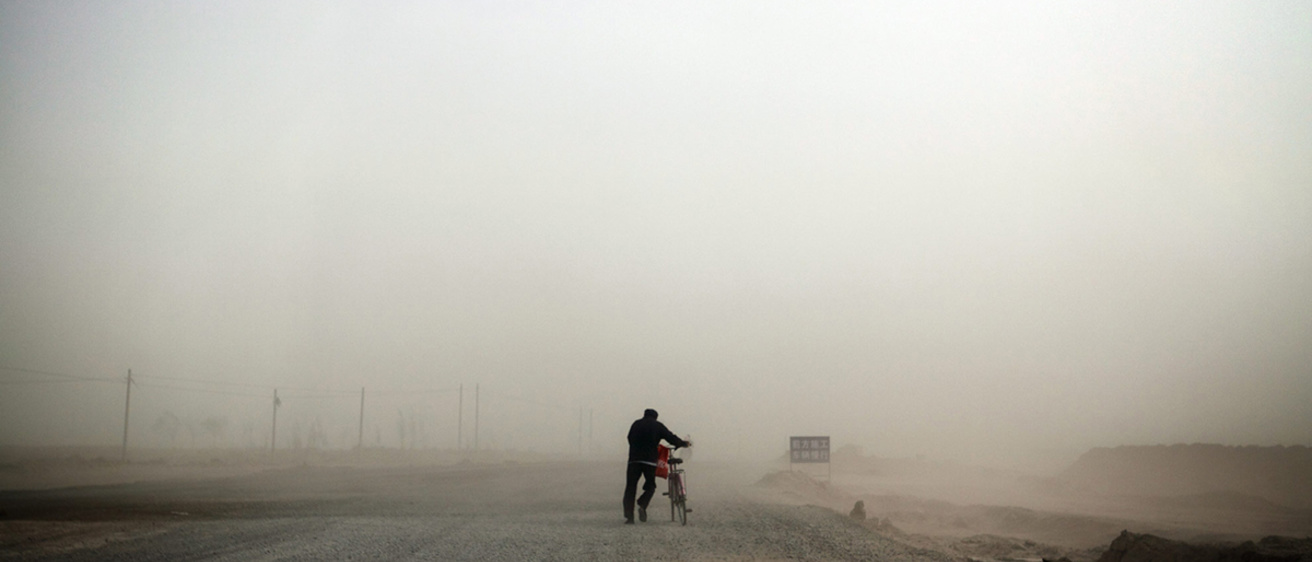Barren landscapes, photo after photo of them, are interspersed with images of people struggling to survive in similarly harsh environments.
Sean Gallagher says his photos strikingly portray the effects that global climate change is having on Asia and the people who live there. His collection contains the usual images of smog-choked cities, of gray skies and people wearing facemasks to keep from inhaling pollution. Those are photos you’d expect to see of environmental degradation in China.
But Gallagher says the changing climate affects Asia in more ways than just smoggy cities. Loss of wetlands and forests, melting ice caps on the Tibetan plateau, and ever-expanding deserts—the result of overgrazing by cattle farmers—threaten thousands of Chinese communities and the billions of people who live in them. Gallagher, a Beijing-based photographer who documents these changes for some of the world’s top news organizations, says those are the images he’s drawn to.
“I want to tell stories of peoples’ daily lives and connect them to the bigger issues occurring globally,” says Gallagher, whose work is published by such news organizations as National Geographic, The Wall Street Journal, and The Guardian. “Biodiversity loss, gentrification, deforestation, extinction, and climate change, these are some of the most pressing issues facing the world.”
Gallagher visited the University of Iowa Sept. 20–22, the kickoff event of a new partnership between the UI and the Pulitzer Center for Crisis Reporting. The center supports in-depth reporting of underreported global issues, providing resources to hundreds of journalists to tell stories that wouldn’t otherwise be told. Journalism funded by the organization is published through partnerships with news organizations such as The New York Times, PBS NewsHour, The New Yorker, NPR, and Time Magazine.
The center also sponsors events at college campuses across the country, including lectures, panel discussions, film screenings, and photography exhibits. The visit to the UI was co-sponsored by the College of Public Health and the School of Journalism and Mass Communication.
David Ryfe, director of the School of Journalism and Mass Communication, says the partnership gives journalism and communication students the opportunity to meet some of the top members of their profession, and to be mentored and inspired by them.
He says the partnership also gives aspiring journalists a link to a network of hundreds of working professionals who participate in the Pulitzer program, a connection that’s increasingly important for students at a time when traditional news outlets are experiencing a period of disruption.

Two or three journalists who, like Gallagher, report on global crises will visit campus every year to meet with journalism and public health students. The UI also will send a student on a global field mission for up to two weeks each year to report on a global health crisis topic of their choice. A journalism student will make the first trip this summer, followed by a public health student.
Ben Smith says he learned much from Gallagher about the modern world of journalism. Smith, a senior journalism major from Waukee, Iowa, and photo editor for The Daily Iowan, says the old model of getting a job at a small news organization and working your way up to a larger organization is gone. Increasingly, photojournalists are contractors who work for multiple news organizations on different assignments, like Gallagher does.
“Sean is representative of this new era where photojournalists freelance their work and there’s not just one route to becoming a journalist anymore,” says Smith. “He really stressed the need to network and build a portfolio, and go after opportunities wherever you find them.”
Smith also was inspired by Gallagher’s focus on the way environmental damage affects people and communities. He’s studying for a sustainability certificate, too, and wants to document similar impacts during his career.
“He showed how you can relate impacts on people at the local level and connect that to global issues,” Smith says. “Meeting him gave me a sense of vision for my future.”
Edith Parker, professor of community and behavioral health in the College of Public Health and member of the college’s Global Public Health initiative advisory committee, says Gallagher’s visit is a good tie-in to the college’s focus on global public health, which addresses the links between public health challenges around the world.
“His photography highlights that work in public health is inherently global and is connected to local issues,” Parker says.
Katie Grabowski, a second-year Master’s in Public Health student from Clarendon Hills, Illinois, says she was inspired by Gallagher’s visit to continue documenting her work visually to show the impact of public health issues to a wider audience. She did some of that last summer while visiting Nicaragua to research maternal and child health issues. The photos she and other students took were turned into a short documentary video by the college’s communications department.
“Sean has so much knowledge and so much experience, and he talked a lot about many of the same things that were going through my mind in Nicaragua about what I was trying to document,” says Grabowski, who was especially grateful for a few tips for beginning photo and video documentarians.
“It’s hard to remember to step back from the work you’re doing and shoot the story when you’re in the moment,” she says.
